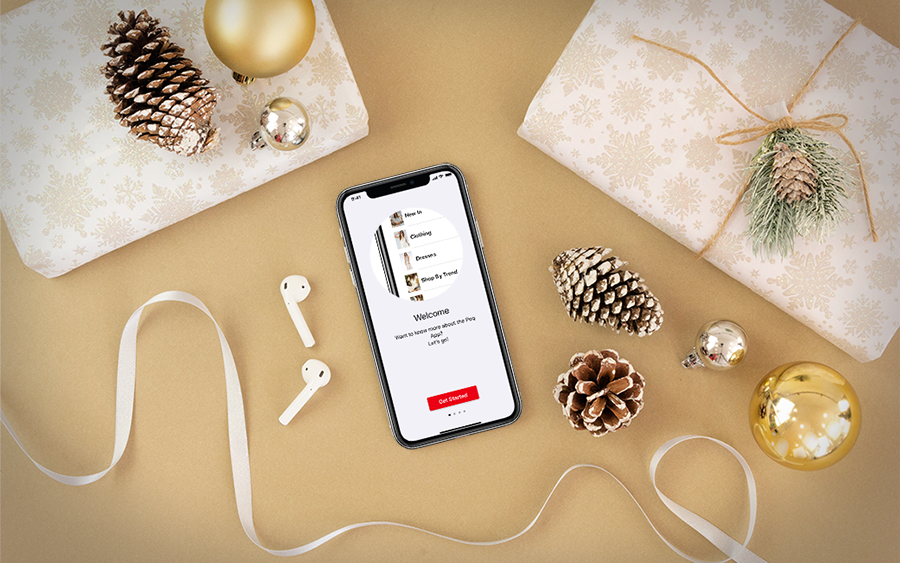This Month in the World of App Commerce – December 2019

There is a lot of emphasis on the 5 days from Thanksgiving to Cyber Monday as the key sales period for most retailers. With uncertain economic landscapes across the globe, from Brexit in the UK to new import tariffs in the US, no one was quite sure how well Black Friday and the surrounding sales days would perform in 2019.
We examine how well the peak sales days went and the outlook for the remainder of 2019 and the role of app commerce.
The preference for mobile
Overall, Black Friday sales grew 14% year-on-year across online and offline channels, with 75.7m shoppers choosing to shop both on and offline, according to the NRF. And consumers choosing to shop on both channels spent, on average, at least 25% more.
Mobile broke records. According to Adobe, on Cyber Monday, $9.4bn in sales were generated in the US and for the first time, over $3bn of that was from smartphones, showing a 46% growth from 2018. Meanwhile, total sales grew by nearly 19% from last year.
Adobe also found that 61% of all online sales came from mobile on Black Friday, whereas Salesforce found that 65% of online sales were through mobile. In our own research, we discovered that 64% of online shopping on Black Friday was on mobile web, and 21% on apps. Meaning an astonishing 85% of all online traffic was on smartphones, showing the importance of getting your app commerce strategy right.
Shoppers choose convenience. Shoppers are often on the hunt for the most convenient way to shop. As we mentioned in our last app commerce news update, Criteo argues that the channel shoppers use changes depending on when they shop during the peak sales period.
For example, online shopping is highest over the Cyber Weekend. In the days leading to Black Friday shoppers browse, discover and research products. We even saw a higher percentage of shoppers add items to wishlists in the days before Black Friday than on Black Friday itself. Revenue peaked on Black Friday while wishlist use slowed as shoppers purchased the items in their wishlists and skipped the wishlist altogether with impulse buys straight to their baskets.
Whereas the week before Christmas drives the most in-store shopping. In this week We argue that customers shop in ways which are most convenient, and Adobe’s analysis of Black Friday supports this argument. They found a 41% growth in the use of BOPIS (Buy Online Pick-up In-Store).
Orders placed for collection in-store on the key shopping days, ultimately, drive in-store traffic on the days when shoppers are most likely to purchase in-store anyway. Omnichannel retailers promoting this option will potentially benefit twice from the purchase as shoppers who collect in-store are more likely to make a secondary purchase.
Collection in-store isn’t the only convenient way consumers were shopping. According to Salesforce, shoppers purchasing through social channels grew 41% since 2018, making up 7% of mobile orders on the Wednesday before Thanksgiving alone.
Learn more about consumer behaviour over the Cyber Weekend from Thanksgiving to Cyber Monday in our latest results
Challenges in the retail space
Projections for this Black Friday were cautious and were right to be. Looking at November as a whole, sales only grew 0.1% in the UK and only 0.2% in the US. This is largely because of a late Thanksgiving, pushing Cyber Monday to fall into December. This late start for sales has even prompted retailers to up their discounting in the run-up to Christmas, with as much as 50% of sales being reported in UK stores. It’s expected that as Cyber Monday has fallen into December, sales figures for the month should be much stronger.
As ease and convenience drive the popularity of online shopping for the cyber sales days, it’s unsurprising that footfall to stores drops over this time. In the US, RetailNext found that Black Friday footfall was down 2.1%, similarly in the UK, footfall dropped 3.4% across November.
However, it’s not all bad news. We found that shopping apps gained even more traction this year. When looking at the same shopping apps across Black Friday 2018 and 2019, we saw a staggering 240% growth in app traffic.



